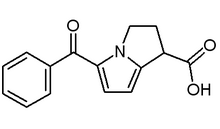LAS VEGAS--Women who chose to go home the same day after laparoscopic hysterectomy fared as well as those who stayed longer in the hospital in a study of 359 patients.
After undergoing total or supracervical laparoscopic hysterectomy in Kaiser Permanente San Diego hospitals during an 18-month period, 81 patients said they felt good and wanted to go home the same day, and 278 stayed longer in the hospital. In each group, 4% of patients developed major complications. The rate of read-missions did not differ significantly between groups: 5% in the same-day group and 2% in the longer-stay group, Dr. Alexandra E. Kidd said at the annual meeting of the American Association of Gynecologic Laparoscopists.
Rates of minor complications were comparable between groups (10% vs. 18%), added Dr. Kidd of the University of California, San Diego.
Women in the same-day group had a significantly lower mean body mass index (27 vs. 29), shorter surgical times (112 minutes vs. 140 minutes), lower estimated blood loss (60 cc vs. 109 cc), and, of course, a shorter length of stay (10 hours vs. 37 hours).
There were no differences between groups in age, parity, uterine weight, other procedures performed, or postoperative diagnoses.
More than 90% of patients in the same-day group went home within 12 hours of registering at the hospital; the remaining patients in this group were discharged in 13-18 hours.
The three major complications in the same-day group involved one ureterovaginal fistula diagnosed several weeks after surgery and two patients who required a second surgery for delayed vaginal bleeding several weeks after hysterectomy. In the longer-stay group, major complications involved five bladder injuries recognized at surgery and repaired laparoscopically, three blood transfusions, and two patients who required a second surgery for delayed vaginal bleeding several weeks after the hysterectomy.
In the same-day group, patients were readmitted to the hospital for pelvic cellulitis (one patient), urinary retention (one patient), and delayed vaginal bleeding (two patients). In the longer-stay group, reasons for readmission included pelvic cellulitis (one patient), urinary retention (one patient), wound infections (two patients), and vaginal bleeding (two patients).
Before undergoing laparoscopic hysterectomy, the study participants attended classes explaining the procedure and were offered a choice of going home the same day they were treated or staying overnight in the hospital. Some who expected to go home the same day stayed longer, and others who thought they'd prefer staying longer actually went home that day.
Approximately half of all patients undergoing laparoscopic hysterectomy at Kaiser's San Diego facilities now go home the same day. The keys to motivating patients to go home the day of surgery are education of the patient, her family or support team, and the hospital team, she said.
Steps to minimize patient nausea and pain improve the chance of same-day discharge, Dr. Kidd said. Intraoperative intravenous dexamethasone (Decadron) or ondansetron (Zofran) and postoperative oral antiemetics can reduce nausea. Surgeons in the study used an electrosurgery instrument "which we believe minimizes tissue damage and inflammation response," helping to reduce postoperative pain, she said. Minimizing suturing and giving intravenous ketorolac tromethamine (Toradol) just before the end of surgery or immediately after also help reduce pain. Patients were discharged with oral hydrocodone (Vicodin) and ibuprofen (Motrin).
COPYRIGHT 2004 International Medical News Group
COPYRIGHT 2004 Gale Group



